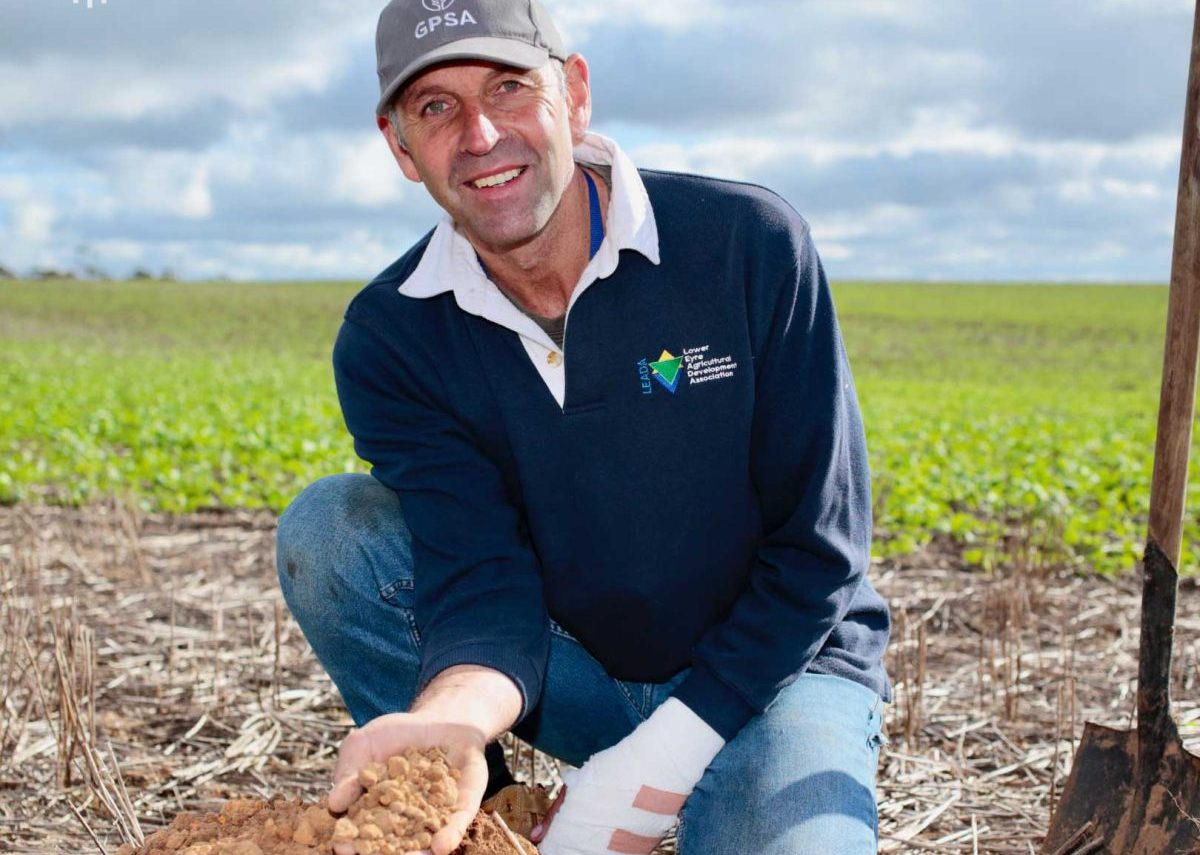
SA grower Mark Modra is optimistic that research into ironstone gravel soils will lead to tailored solutions for growers to unlock the potential of these soils. Photo: GRDC
FIELD research has commenced across South Australia to convert the knowledge gained from laboratory assessments of ironstone gravel soils into practical solutions to help growers increase crop productivity.
Occurring on two million hectares of agricultural land across SA and Western Australia, ironstone gravels have limited capacity to hold moisture and nutrients that prevents them being as productive as they could be.
According to SA grower Mark Modra, who farms on the Eyre Peninsula, because of the soils his cereal crops yield about half of their potential based on his 500mm rainfall.
“About three quarters of our land is ironstone soil – it has a major impact on our production,” Mr Modra said.
“We should be able to grow 5 to 6 tonnes per hectare of wheat, but we can grow nowhere near that.”
To help, Grains Research and Development Corporation (GRDC) has invested in research to examine the chemical and physical traits of the composition of the gravel.
The researchers aim to understand the gravel’s potential water and nutrient absorption capacity – and what practical steps growers can take to increase crop productivity where the gravels occur.
Murdoch University researcher Francesca Brailsford is leading the second phase of the project that will take what was learned in the lab to glasshouse and field trials.
“We want to look at how different crops fare across the different gravel types and determine whether different chemical and engineering solutions can improve crop yields across those different gravels,” Dr Brailsford said.
One common trait of the gravel is its ability to lock up nutrients.
“We tend to apply a lot of inputs, particularly nitrogen, to try and hold up the crops on the ironstone soils,” Mr Modra said.
“And so not only do we get poor yields, it costs us more to grow the crop.”
Tailor recommendations
Dr Brailsford hopes the research will be able to develop tailored fertiliser recommendations for the three main types of ironstone gravel – iron, silica and aluminium.
“We want to develop a relatively simple diagnostic tool where growers can quickly determine which gravel type is present in their paddock.
“Then there will be a suite of management recommendations available to growers that are best suited to their gravel type.
“We’re looking at real-world solutions that can be applied and we’re putting a lot of effort into doing the glasshouse and field trials so that we can start to see results.”
For Mr Modra, the research offers real opportunities to help growers like him remove the guesswork from this challenging system.
He is optimistic about the research and expert capacity behind it.
“Once growers know more information about their gravels and how best to treat them, they can start implementing changes to improve their productivity.”
GRDC manager agronomy, soils and farming systems (south) Andrew Smith said the impact of the research would be significant for growers across the Eyre Peninsula and Kangaroo Island where the ironstone gravels occur.
“Previously we really didn’t know much about ironstone gravels, so it was important for GRDC to invest in better understanding them to help unlock their potential,” Mr Smith said.
“We’re hopeful the research will generate transformational tools for South Australia’s growers to help increase their crop productivity and profitability on these soils.”
The research will explore different soil amelioration techniques with field trials to be conducted across the Eyre Peninsula and Kangaroo Island in SA, and Williams and Neridup in WA with local growers.
The ironstone gravel soils project is part of a SoilsWest Alliance initiative based at Murdoch University, which also includes the University of Western Australia, Department of Primary Industries and Regions South Australia, Queen’s University Belfast and Bangor University.
Source: GRDC



HAVE YOUR SAY